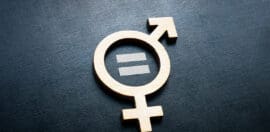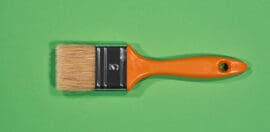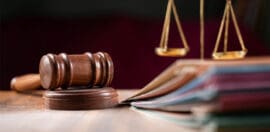What’s going on with independent candidates and the federal election?

15 December 2021 at 3:23 pm
With the 2022 election promising to be close – the Morrison government has just a one-seat majority – could high-profile independents be a crucial factor in key seats, asks Malcolm Mackerras.
From former ABC journalist Zoe Daniel in Goldstein to businesswoman Allegra Spender in Wentworth, swathes of locally-endorsed independent candidates are contesting high-profile seats, with a strong focus on climate change action.
Since the introduction of proportional representation for the Senate in 1949, we have become very accustomed to independents and minor parties being important players in the Senate. But what about the lower house?
How MPs get elected is important
The answer lies in the system used to elect candidates to the House of Representatives.
Proportional representation is good for minor parties and independents, but in the lower-house, our single-member electorates create and then reinforce two-party systems.
The change we need is coming.
As I told Sky News, having more centrist independents in Canberra is the only way to break the deadlock on climate and integrity.#TeamTink #IndependentsDay #Auspol pic.twitter.com/GyJeQaNE2W
— Kylea Tink #TeamTink (@KyleaTink) December 9, 2021
This is why, since 1910, the House of Representatives has been a two-party affair – and there is no reason to think this is fundamentally changing.
Nevertheless, it is quite possible the next parliament will be like the 16th and 43rd, where independent members played vital roles.
The 16th parliament
The 16th parliament was elected on 21 September 1940, and had three prime ministers: Bob Menzies (until August 1941), Arthur Fadden (from August to October 1941) and John Curtin (from October 1941).
Two independents played a key role here – Arthur Coles (representing the former electorate of Henty, Victoria) and Alexander Wilson (Wimmera, Victoria). Originally elected to support Menzies, they withdrew that support. The short-term effect was Fadden’s brief term, but in October 1941, they installed Curtin’s Labor government.
The next election, in 1943, produced landslide wins in both houses for John Curtin’s Labor Party. The two independents who had played such a critical role in the 16th parliament retained their seats but became so unimportant they soon resigned.
The 43rd parliament
The 43rd parliament was elected in August 2010. The prime ministers were Julia Gillard until June 2013, then Kevin Rudd until Labor’s defeat in September the same year.
The prime ministership was famously delivered to Gillard after independents Rob Oakeshott and Tony Windsor threw their support behind Labor.
The following election in September 2013 produced a landslide win in the House of Representatives election for Tony Abbott’s Liberal-National Coalition. The two independents – so critical in the 43rd parliament – did not seek election to the 44th.
The four key independent members – across the 16th and 43rd parliaments – represented conservative electorates, but put Labor prime ministers into office. That Coles, Wilson, Oakeshott and Windsor would become quite so important was not predicted, because neither the 16th nor the 43rd were forecast to be “hung”.
What about the 47th parliament?
This is where the present situation is so different. There is genuine talk of a hung parliament.
However, I still think Labor will likely win outright next year – essentially because Prime Minister Scott Morrison does not “get it” on women, climate change and integrity issues. If that is correct, then none of the independents will be of special importance.
However, I do think it is sensible to speculate on two possible alternative results, based on my reading of individual seats.
At the May 2019 election, the Coalition won 77 seats, Labor 68, independents five and the Greens winning the single seat of Melbourne.
One possible scenario in 2022 sees the Coalition winning 72 seats, Labor 71, the Greens two, and independents six. In that hung parliament, I would expect Morrison to remain prime minister.
A second possible scenario sees Labor winning 72 seats, the Coalition 71, the Greens two, and independents six. In that hung parliament, I would expect Labor leader Anthony Albanese to replace Morrison as prime minister.
Independents in 2022
So, who would be these six independents?
Based on my analysis, I predict Andrew Wilkie (Clark, Tasmania), Rebekha Sharkie (Mayo, SA), Zali Steggall (Warringah, NSW) and Bob Katter (Kennedy, Queensland) will be re-elected.
Two other key contests are difficult to predict.
Helen Haines is also hoping to be re-elected in Indi. However, there were only 2,816 votes between her and the Liberal candidate in 2019, and we are yet to know who her Liberal competitor is in 2022.
What a beginning #MackellarVotes!! Thanks to my family 🥰 and the dedicated crew who make up #TeamSophie pic.twitter.com/oop4mqI1sL
— Dr Sophie Scamps (@SophieScamps) December 5, 2021
In Wentworth, Dave Sharma, the Liberal winner, was only 2,346 ahead of defeated independent Kerryn Phelps. In 2022, Spender – who is well-connected and enjoys a high profile in the community – is trying to unseat Sharma.
Bearing in mind 100,956 formal votes were cast in Indi and 89,754 in Wentworth, these seats are only held by very small majorities.
Serious speculation exists the independents may win in Goldstein (Daniel), Flinders (Despi O’Connor), Hume (Penny Ackery), Mackellar (Sophie Scamps) and North Sydney (Kylea Tink).
In 2019, the contests in those seats were between Liberal and Labor candidates, so this makes these contests very difficult to predict.
As we approach an election year, a sensible, educated guess is there will be about six (or at most seven) independents elected, in Clark, Kennedy, Mayo and Warringah, plus two or three others out of the seats identified above.
Nothing new here
This will of course matter to the composition of the 47th parliament, but I don’t think we are seeing a new phenomenon.
If the 47th parliament is hung, then history tells us the election for a 48th is likely to deliver a clear result to one side or the other. And the electoral system for the lower house means the two-party system is not going anywhere.
![]()
About the author: Malcolm Mackerras is a distinguished fellow at the PM Glynn Institute at Australian Catholic University
This article is republished from The Conversation under a Creative Commons license. Read the original article.








